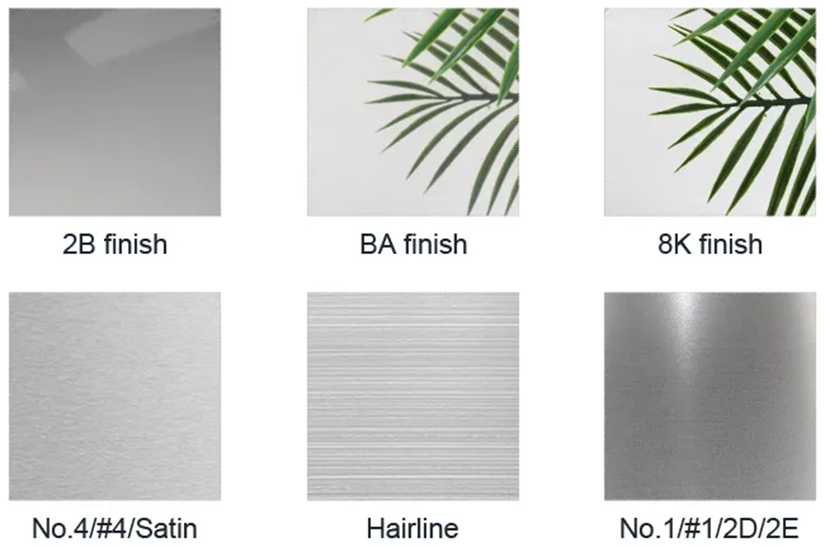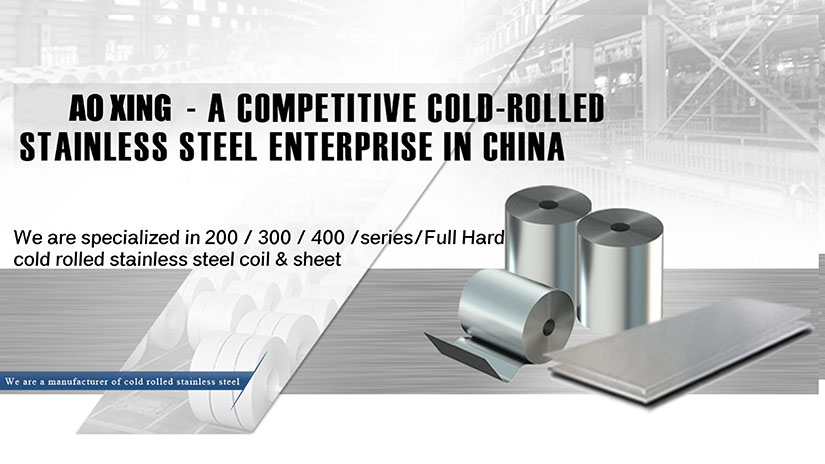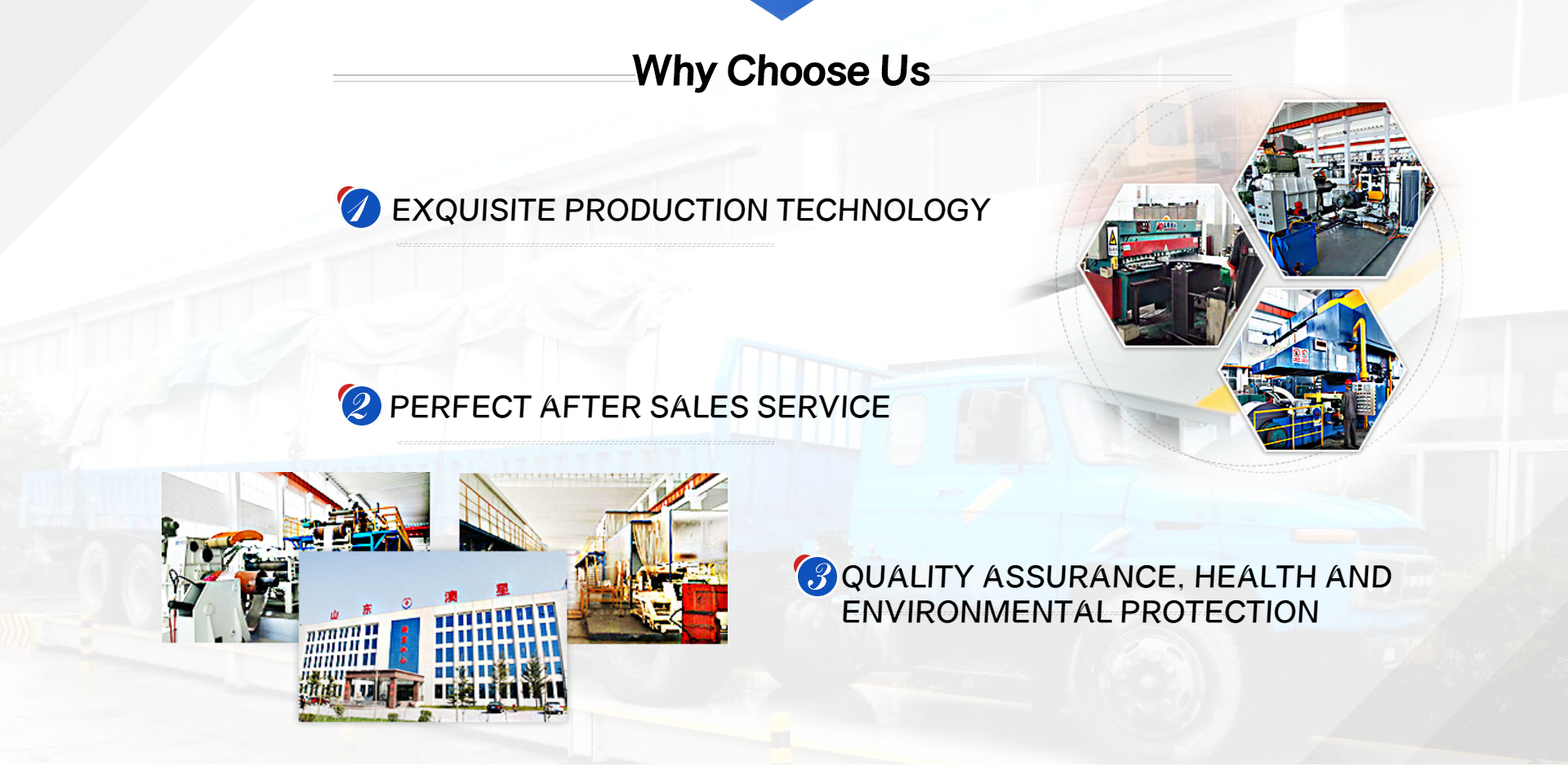304 Stainless Steel Sheet
What is 304 Stainless Steel Sheet?

The 304 stainless steel sheet is renowned for its exceptional resistance qualities, particularly against corrosive substances, marine settings, and industrial conditions. This metal sheet stands out for its popularity and cost-effectiveness across various sectors. It is celebrated for its cleanliness, durability, and versatility, making it suitable for diverse applications, from construction projects to household appliances.
Offering a broad selection, our 304 stainless steel sheets come in multiple dimensions, thicknesses, and finishes to accommodate your specific requirements and preferences.
Features of 304 Stainless Steel Sheet
The 304 stainless steel sheet is celebrated for its adaptability and resilience across a diverse range of applications. This variant stands out for its robust performance against various atmospheric conditions, excluding marine and heavily polluted industrial environments. Its aesthetic appeal remains optimal with routine maintenance or natural cleansing by rain.
Notably adept in potable water environments, 304 stainless steel, however, faces challenges in high chloride settings, where it's prone to pitting and crevice corrosion at concentrations above 200 ppm. Its use in seawater is limited due to susceptibility to crevice corrosion, and exposure to chlorides above 60°C may lead to stress corrosion cracking, emphasizing the need for careful selection in corrosive environments.
This austenitic stainless steel showcases remarkable toughness and energy absorption in impact testing, maintaining its integrity in temperatures as low as -200°C. For grade 304 sheets, the maximum service temperatures are advised at 870°C for intermittent use and 925°C for continuous exposure.
Characterized by excellent formability, 304 stainless steel sheets lend themselves to a variety of metalworking processes, with plasma cutting being preferred over oxygen cutting. Its deep drawing quality is especially noteworthy, making it suitable for intricate shaping.
Weldability is another strong suit, with most fusion welding techniques being compatible. For applications demanding heightened corrosion resistance, especially in welds thicker than about 6mm, opting for 304L, the low-carbon variant, is beneficial. Conversely, for elevated temperature scenarios, 304H, the high-carbon variant, offers improved performance, underscoring the versatility of 304 stainless steel sheets in meeting diverse requirements
304 Stainless Steel Chemical Composition & Technical Data Sheet
304 Stainless Steel Standards Comparison
| STS | USA | UNS | CHINA | EURONORM | RUSSIA | SWEDISH | JAPANESE | |
| GRADE | AISI/ASTM | NO | GB | NO | NAME | GOST | SS | JIS |
| 304 | 304 | S30400 | 06Cr18Ni9 | 1.4301 | 06Cr18Ni10 | 08KH18N10 06KH18N11 | 2332 | SUS 304 |
304 Stainless Steel Chemical Comparison
| Grade | Standard | Chemical Composition(%) | |||||||
| C | Si | Mn | P | S | Cr | Ni | Mo | ||
| 304 | ASTM A240 | ≤0.07 | ≤0.75 | ≤2.00 | ≤0.045 | ≤0.030 | 18.00~20.00 | 8.00~11.00 | - |
304 Stainless Steel Mechanical Properties
| Grade | Tensile Test | Hardness Test | |||
| 0.2% Y.S(Mpa) | T.S(Mpa) | Elongation(%) | Hardness | HV | |
| 304 | ≥205 | ≥520 | ≥40 | Annealed | 150 |
304 Stainless Steel Finish & Application

The 304 stainless steel sheet stands as a cornerstone in the realm of stainless steel applications, revered for its versatility and widespread use in various industries. As a material, it is predominantly favored for its high resistance to corrosion and rust, making it an ideal choice for both practical and decorative purposes. Among its variants, the 304 2B stainless steel sheet is particularly notable for its suitability across multiple surface treatments.
This specific grade offers a smooth, refined matte finish, making it an excellent foundation for further processing such as mirror polishing, brush sanding, and more intricate decorative finishes like PVD coating, etching, and embossing. These enhancements not only elevate the aesthetic appeal of the material but also its functional value in diverse applications, ranging from architectural accents to consumer appliances.
Crafted through a meticulous process of cold rolling, the 304 stainless steel sheet emerges from a hot-rolled sheet that has undergone annealing and pickling. The majority found in the market boasts a 2B finish, characterized by its uniform matte appearance, due to the fine and controlled surface treatment it receives. This process ensures a surface conducive to various decorative treatments, offering designers and engineers a canvas of unparalleled quality and adaptability.
Moreover, the cold-rolled method endows the stainless steel sheet with enhanced strength and formability, making it conducive to fabrication processes like punching and bending into precise sizes for an array of applications. The inherent smoothness of the 2B surface is particularly advantageous for creating stainless steel wire drawing plates, processed further to achieve desired textures and finishes.
304 Stainless Steel Sheet Package & Loading Details
At Aoxing, as a premier provider of 304 stainless steel sheets, our dedication extends to the excellence of our packaging and shipping practices, developed from years of export experience. We are well-versed in the standards required for export packaging and take additional steps to reinforce our products within the container, ensuring they withstand the rigors of transportation without damage.
Our 304 stainless steel sheets are individually wrapped in robust, water-resistant materials to guard against environmental elements. To ensure the sheets remain immobile and maintain their pristine condition during transit, we employ strategic bracing within the container. This methodical approach to packaging guarantees that your stainless steel sheets arrive in perfect condition, ready for your project needs.




WHY CHOOSE US?

We are the cold-rolled stainless steel coil production base in China with 200,000 tons capacity annually.
1. Guaranteed Stock Availability: Experiencing stock shortages during crucial times can hinder your projects. Our robust inventory management ensures a consistent supply, ready to dispatch large quantities swiftly, keeping your operations smooth and uninterrupted.
2. Comprehensive Range of Specifications: Finding the exact stainless steel coil specifications can be challenging. We offer a diverse range of specs, ensuring you find precisely what your project demands, with the assurance of our commitment to meeting your specific needs.
3. Customized Material Processing: Custom processing needs can be demanding. Our advanced facilities provide tailored solutions, from precise dimension alterations to specific finish treatments, ensuring your requirements are met with utmost precision.
4. Accurate Shearing Services: Precision is key in stainless steel utilization, and our expert shearing services guarantee exactness in every cut, aligning perfectly with your specifications and quality expectations.
5. Cost-effectiveness is crucial in supplier selection. Our optimized procurement and cost-efficient processes ensure you receive not just premium-quality products but also the best prices, offering exceptional value for your investment.


304 Stainless Steel Sheet FAQ
1. Is secondary quality 304 stainless steel sheet available?
We exclusively supply premium grade SS 304, ensuring top-quality products only.
2. Can you provide custom 304 stainless steel sheet?
Absolutely, we tailor 304 stainless steel sheet to your needs, ensuring your specifications for thickness, width, length and physical properties are met.
3. What's the delivery timeline?
Quick delivery for trial orders within a week, while regular orders range from 7-30 days.
4. How do you guarantee your 304 SS product quality?
Our 304 products undergo rigorous inspections during manufacturing, cutting, and packaging to ensure the highest quality. And we also provide 304 stainless steel Mill Test Certificate.
5. What is the difference 304 vs 430 stainless steel?
Corrosion Resistance:
430 stainless steel is corrosion-resistant due to its chromium content. However, it's generally considered less robust compared to other grades.
304 stainless steel exhibits superior corrosion resistance, attributed to its nickel addition, enhancing its alloy composition.
Popularity:
430 is the second most commonly utilized stainless steel grade.
304 holds the top spot as the most prevalent stainless steel, favored for its versatility and superior properties.
Workability:
430 is malleable and can be formed into various shapes but poses challenges in welding.
304 is renowned for its excellent workability, including ease of welding, forming, and fabrication, making it highly versatile in various applications.
Magnetism:
430 stainless steel exhibits magnetic properties.
304 is typically non-magnetic, a trait valued in certain applications.
Food Grade:
304 is known as a food-grade stainless steel, preferred for applications requiring sanitary conditions in the food and beverage industry due to its excellent corrosion resistance.
While both grades are durable and resistant to rust and corrosion, 304 stainless steel generally offers better longevity and corrosion resistance, making it a superior choice for applications demanding higher performance. In contrast, 430 is more cost-effective and may be suitable for less demanding applications or where budget constraints are a priority.
6. What is the difference 304 vs 201 stainless steel?
201 stainless steel is cost-effective, with lower nickel and chromium, affecting its corrosion resistance unlike the superior 304. 304 excels in rust resistance and durability, justifying its higher cost, ideal for demanding conditions. The visual similarity of 201 to 304 is deceiving; they differ in corrosion resistance, which is pivotal in selecting the right grade.
7. What is the difference between 304 vs 304L stainless steel?
201 stainless steel is cost-effective, with lower nickel and chromium, affecting its corrosion resistance unlike the superior 304. 304 excels in rust resistance and durability, justifying its higher cost, ideal for demanding conditions. The visual similarity of 201 to 304 is deceiving; they differ in corrosion resistance, which is pivotal in selecting the right grade.
8. What is the difference between 304 vs 304L stainless steel?
Price Variation: 304L stainless steel typically costs more than 304 due to its lower carbon content, which affects the overall manufacturing process and attributes.
Chemical Composition: The key distinction lies in their carbon content; 304L contains less than 0.03% carbon, while 304 has up to 0.08%. This difference gives 304L superior corrosion resistance and makes it preferable for applications requiring extensive welding.
Mechanical Properties: 304L, with its reduced carbon content, offers better weldability and corrosion resistance, particularly in high-corrosion environments, whereas 304 has higher tensile strength, making it suitable for areas requiring durability.
9. What is the price of 304 stainless steel sheet?
Usually the approximate 1.00mm 4*8ft 304 stainless steel sheet price is more than 60 US dollars/sheet. The actual price will fluctuate based on exchange rates, market conditions, etc. For details, please contact us for a quote.
More information of 304 vs 304L, please kindly browse to our article: The Difference Between 304 Stainless Steel And 304L Stainless Steel





